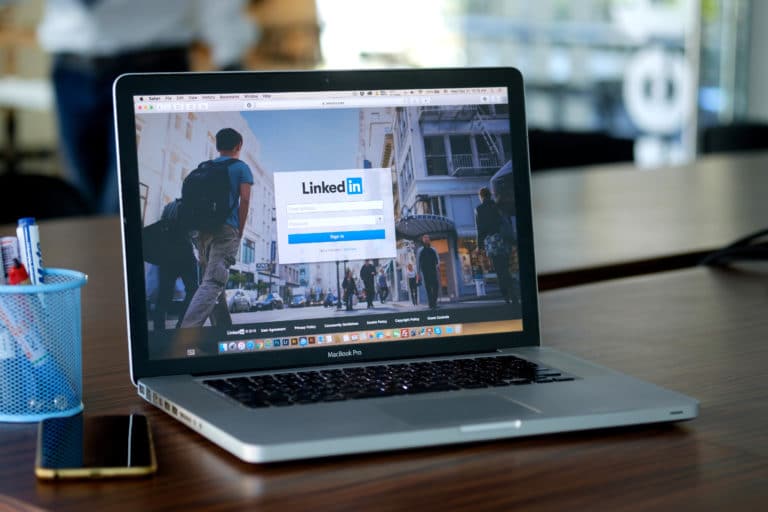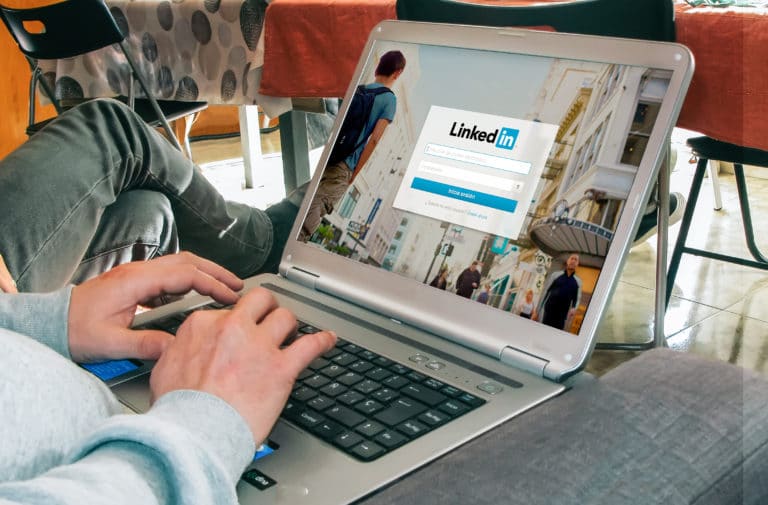LinkedIn company page vs. personal profile?
Which one should you use in your social selling strategy?
That’s a question that’s been asked a gazillion times by B2B brands looking to drive business growth on one of the world’s biggest professional platforms.
The short answer is both.
However, you should leverage your personal profile more as they’re more effective for generating awareness, demand, and leads for B2B companies.
But more on that in a moment.
Key Differences Between Company & Personal Pages
Besides the differences in looks, are there any other differences between company pages and personal profiles?
To maximize your impact and effectiveness on LinkedIn, you need to know the strengths and weaknesses of both. This will help you design a LinkedIn marketing strategy that will turbocharge your business growth.
What is a LinkedIn Profile?
User profiles play a huge role in how you grow your presence on any social media platform. On LinkedIn, your profile plays a huge role in the quality of connections you make and, ultimately, your success in leveraging LinkedIn.
So what is a LinkedIn profile?
According to LinkedIn, it’s:
“a professional landing page for you to manage your own personal brand. It’s a great way for you to tell people who you are and what you do by displaying a general history of your professional experiences and achievements”.
The key to social selling lies in personal branding. That’s why optimizing your LinkedIn profile is critical.
BTW – looking for the ultimate social selling workshop? Let’s talk!
What is a LinkedIn Company Page?
Your company page is your brand’s profile on LinkedIn. Unlike a personal profile that the owner can only manage, a company page can be managed by multiple people with authorization.
Your company page is used to manage your corporate brand.
The primary purpose of a company page is to broadcast updates about your brand and product. It’s an excellent tool for boosting brand awareness of your brand.
Key Differences Between a LinkedIn Profile and a Company Page?
So, what are the main differences between a personal profile and a company page?
Company Pages are Passive, While Pages are Active
One of the biggest differences between LinkedIn profiles and company pages is that company pages are passive. You can’t proactively connect to other users from your company page. You can’t have one-on-one conversations with prospects or build relationships with them.
Personal profiles, on the other hand, are active. You can use them to reach out to prospects, carry out conversations, and build meaningful relationships.
Pages Represent Organizations, While Profiles Represent Individuals
Another big difference between LinkedIn company pages and profiles is that pages represent organizations while profiles represent individuals.
Because of this, they’re designed differently, offer different user experiences, and achieve different purposes.
For example, a personal profile includes sections that tell users more about an individual. Said sections include Activity, Experience, Skills & Endorsements, Recommendations, Interests, e.t.c. On the other hand, a page describes what a business is all about through sections like Overview, About, Jobs, and People.
Pages Have Followers, While Profiles Have Connections
What does this mean, and why is it important?
As a page, users choose to follow you. You can’t reach out to them and connect with them as you would with a profile. Also, proactive engagement is limited with followers.
LinkedIn Ads
LinkedIn ads are a powerful way of reaching a broader audience in a short period of time. Unfortunately, you can only run them from a company page, never from a personal profile.
While LinkedIn company pages and personal profiles are different, it’s important to note that you can’t create a company page without a personal profile. That just shows how powerful your personal profile is.
Why B2B Companies Should Leverage Executive Profiles
When it comes to effective LinkedIn marketing, it’s always best to leverage personal profiles. That’s why every brand that wants to have traction on LinkedIn should take advantage of their executive’s profiles. Here are a few reasons why:
People Prefer to Connect with Other People
One of the most significant reasons using your personal profile is best is that people tend to prefer connecting with other people and not a brand. While LinkedIn may be a professional platform, users are still looking for meaningful relationships that can add value to them.
This is only possible by connecting with other users.
If you want to raise brand awareness, drive your lead generation efforts, and even boost your sales, your executives must be active on LinkedIn.
While any activity is better than none, make sure that your engagements with your connections are as laser focused and relevant as possible to get the most out of each interaction.
People Relate Better to Personal Stories
Even in the B2B space, personal stories and anecdotes have a greater impact than bland company updates. This is another reason you must leverage your personal profile more than your company page.
When you share your experiences or personal stories, you tend to get more engagement on the platform. As a result, your post will be shown to more people, thereby boosting your brand awareness.
Leverage Outreach Campaigns
One of the most powerful LinkedIn marketing strategies is running targeted outreach campaigns. This is when you reach out to people via their inboxes, like cold email outreach.
On LinkedIn, this is only possible via personal profiles.
A crucial key to running successful LinkedIn outreach campaigns is personalization. This goes two ways:
- Know your prospects well enough to craft content and messages they’ll resonate with.
- Reach out with a personal profile they can relate to.
With this two-pronged approach, generating quality leads o LinkedIn becomes easier. And it all hinges on your personal profile.
Harness the Power of Personal Branding
A personal brand is a powerful force you can use to build an audience and grow your business on LinkedIn. Again, this can only be done through a personal profile.
FYI, personal branding is the practice of proactively shaping how other people perceive you as an individual.
What does this have to do with B2B social selling?
Everything.
Your personal brand is essential in establishing you as a thought leader in your space. It shapes people’s perceptions of the brand you represent and adds value to your product and brand.
This is why B2B brands should give their executes a voice on LinkedIn and help them design impactful content marketing strategies for the platform.
How to Get the Most Out of Your Company Page Experience
Should you ditch your company page altogether since the company page is more limited than the personal profile?
Not at all.
You can still use your LinkedIn company effectively if you optimize it well and use it properly. Here are a few tips to help you do so:
Nail Your Branding
The first step to getting the most out of your LinkedIn company page is to nail your branding. This means creating on-brand visuals for your company page banner, profile image, and other visual assets you’ll be using in your updates.
Because your LinkedIn company page is an extension of your website, you must ensure a seamless experience when users move between the two platforms.
Complete Your Company Profile
When prospects are interested to know more about your company, they’ll check out your company page to find out more about the solutions you provide. Finding an incomplete company page is a turnoff that will cost you your credibility.
That’s why you must make sure to fill in every piece of information required when setting up your company page.
Post Regularly
Posting updates from your company page is another great way to get the most out of your page. However, don’t post just for the sake of posting. Create your content strategically by:
- Understanding your audience’s needs
- Doing keyword research
- Create engaging content
- Grab attention by using relevant visuals
Post relevant content your target audience resonates with to increase engagement rates.
Boost Your Posts
One caveat of LinkedIn company pages is the limited organic reach. The best workaround for this is to boost your posts. This simply means paying for your posts to reach a wider audience, like sponsored posts on other social media platforms. Your post will appear as an ad in users’ feeds.
The best way to get the best return on advertising spend (ROAS) on LinkedIn is to boost posts that:
- Had good engagement organically
- Use profile-based targeting
- Boost posts for at least two weeks
Reaching a larger audience through your page will give you more opportunities to engage with your target audience. It’s an excellent way to raise brand awareness and generate leads.
LinkedIn Company Page vs. Personal Profile — Use Both Well
So, which should you use — a LinkedIn company page or a personal profile?
From research and our experience, leveraging your personal profile will bring you greater results. That’s especially if you:
- Optimize your profile
- Post relevant content regularly
- Engage with other users’ posts
With over 810 million users (and growing), LinkedIn is definitely the platform to be on as a B2B brand. And for best results, involve your executives and other team members in creating and publishing content on the platform.
Need help creating a LinkedIn marketing strategy for your team?
Then get in touch, or sign up for a free trial of Aware (our social selling product) and we’ll help you rock your LinkedIn game.




